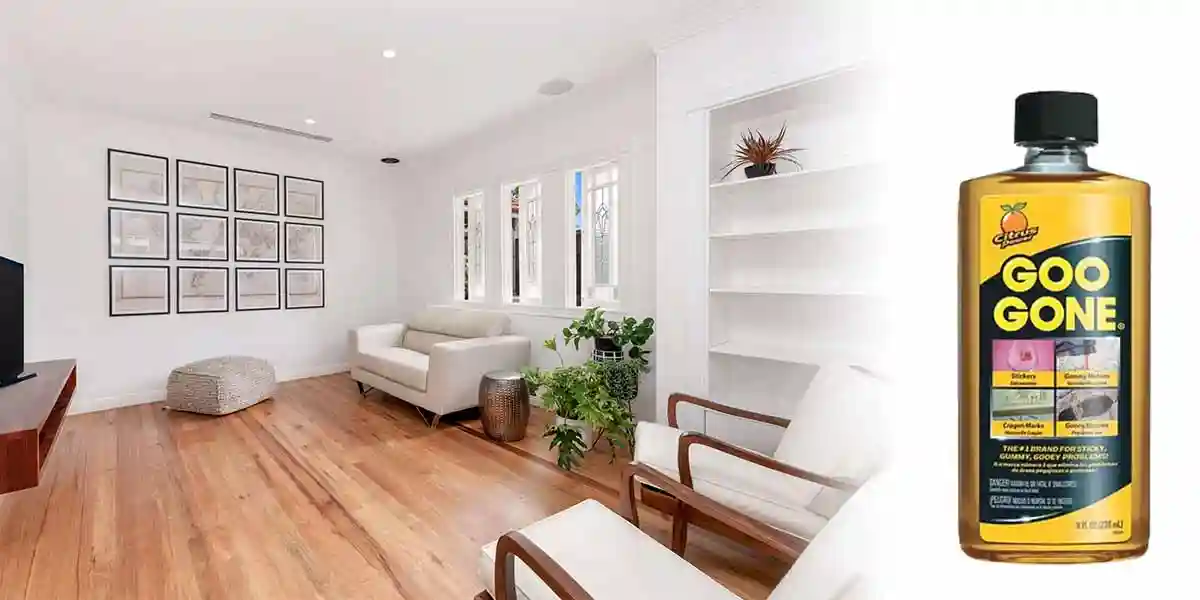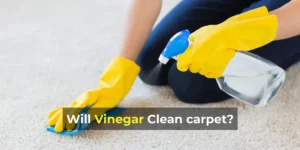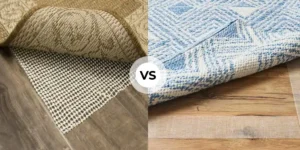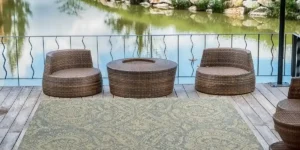When a stubborn sticker residue or a spilled adhesive creates a mess on your laminate floors. At that moment, it is important to think of a quick solution.
And might be tempted to reach for a solution like Goo Gone. Goo Gone is a popular cleaner known for its ability to tackle sticky messes. But can you use goo gone on laminate flooring?
The short answer is yes, you can use Goo Gone on laminate flooring. Goo Gone contains citrus oils and other ingredients that help break down and dissolve sticky substances.
For just $6.99. You can remove chewing gum, wax, grease, crayon marks, glue, and sticky messes from laminate floors.
As a result, Goo Gone is the best and safest product to use if you are experiencing a sticky situation.
For more information about Goo Gone and how to use it on laminate flooring, keep reading the article. First, let’s find out if you can use Goo Gone on laminate flooring and whether it is safe on laminate floors.
You Might Like: 5 Best Ways to Remove Sticky Residue from Laminate Flooring
What is Goo Gone and is it Safe for Laminate Floors?
Goo Gone is an adhesive remover manufactured by a company with the same name.
Goo Gone is designed to conquer tough and adhesive messes on various types of floors. Laminate flooring is one of them. It is citrus from oranges and lemons that makes Goo Gone so powerful on gooey messes.
Citrus is made up of acid and enzyme properties. And making it effective in dissolving tough and adhesive stains. Also, Goo Gone leaves behind a citrus aroma. This makes your home smell fresh and pleasant. Unlike other adhesive removers on the market.
Moreover, it is also an excellent choice for removing labels on items. It can tackle many sticky messes like sill, scuff, tar, etc.
Most importantly, it is budget-friendly and the safer alternative for your laminate flooring.
With the above information, we hope we have answered your question. And, if you have been hesitant to use it, worry no more because it is completely safe.
Can You Use Goo Gone on Laminate Flooring?
Yes, you can use Goo Gone on laminate floors. The citrus-based formula in Goo Gone is non-toxic. And it breaks down sticky messes such as gum and Goo with just one application.
Plus, it also removes adhesive residue, stickers, crayon marks, labels, adhesives, etc.
It is an excellent product for laminate flooring in various environments. These include households and retail spaces.
While it’s effective, you should use it and follow these simple steps to ensure the safety of your floors:
- Spot Test: Before applying Goo Gone to a larger area, perform a spot test in an inconspicuous area of your laminate flooring. This helps you check for any adverse reactions or discoloration.
- Dilution: Consider diluting Goo Gone with water, especially for mild sticky residues. Mix a small amount of Goo Gone with water and use a soft cloth to apply it to the affected area.
- Wipe: After applying Goo Gone, wipe the area promptly with a clean, damp cloth. This helps remove any residue from the cleaner and prevents it from lingering on the floor.
- Avoid Soaking: Do not let Goo Gone or any cleaning solution sit on the laminate flooring for an extended period. Excessive moisture can seep into the seams and edges, potentially causing damage.
- Regular Cleaning: For routine cleaning, opt for a mild, pH-balanced laminate floor cleaner. This helps maintain the floor’s finish without resorting to heavy-duty solutions like Goo Gone unless necessary.
Note: Prevention is the best strategy. Promptly clean up spills and messes to avoid the need for heavy-duty cleaners. While Goo Gone can be a handy tool for tackling tough adhesive residues. Using it cautiously and following these guidelines will help ensure that your flooring remains in top-notch condition
How to use Goo Gone on Laminate Floors?
Step 1: Pre-test
It would be helpful to test Goo Gone in an inconspicuous area before applying it to the mess. It will ensure that you won’t damage your laminate flooring.
An inconspicuous area could be a corner or a laminate plank you kept after installation.
If everything looks good, you’re ready to move on to the next steps with confidence!
Step 2: Applying Goo Gone
Once you are certain it is completely safe to use, dab Goo Gone on the blemished spot. Please, carefully apply it directly on the spot and make sure you coat it, but do not oversaturate the spot/area.
Or, you can apply it indirectly by pouring it onto a clean, lint-free cloth and then dabbing it onto the surface.
Step 3: Allow it to Sit
Once you’ve applied, let the Goo Gone solution or damp rag sit on the blemished spot for some moment.
Yet, the tougher the stain, the longer it should stay, but for no longer than 10 minutes. It is to dissolve the stain or sticky mess to be dealt with immediately instead of wasting much time.
Step 4: Rinsing the Spot
Soak a lint-free cloth in lukewarm distilled or tap water. Use it to rinse the spot, wiping away the mess and excess Goo Gone. Make sure you rinse the surface to remove all goo.
Step 5: Dry the Surface
Once you are finished rinsing, remove any excess water using a clean cloth without lint or a towel. Lint-free cloths minimize scratching, which reduces laminate flooring appearance. This step ensures there’s no leftover moisture on your laminate floor.
Must See: How to Dry Water Under Laminate Flooring? (A Step-By-Step Approach)
Alternatives to Goo Gone
Scraperfect
While Goo Gone is the most effective cleaner for laminate flooring. Scraperfect is a gentler cleaner that is more efficient on stains and adhesives. It is not as effective as Goo Gone, but it is very useful and non-toxic.
Using Acetone
Acetone is a powerful stain remover. It’s perfect for removing paint, nail polish, oil films, dyes, and flooring adhesives. You can use it on any stain and floor since it does not have the same strong odor as paint thinner.
Must See: Will Acetone Damage Laminate Floor? (Explained)
Using Homemade Cleaning Solutions
Or, you can make your own cleaning solutions.
- Mix equal parts white vinegar, rubbing alcohol, and filtered water in a spray bottle.
- Then add 5 drops of any essential oil available. Shake well to mix.
Once you are finished, spray the solution on the stained area. Let it sit for a few moments to weaken the stain, and then gently work on the stain with a soft toothbrush bristle.
Then, rinse the spot with a damp, lint-free cloth and dry it immediately with a dry cloth without lint.
Frequently Asked Questions Regarding Goo Gone
Is Goo Gone flammable?
Goo Gone laminate flooring cleaner is not flammable. Yet, it contains some flammable ingredients. This may cause people to question whether it is.
It is a 95°F or 35°C flashpoint, which means it can be set on fire with an open flame or spark at this temperature. It is extremely likely to catch fire and spread rapidly if it comes into contact with an open flame.
Accordingly, Goo Gone is safe for use on plastic and wood and does not harm the environment or human health.
Does Goo Gone remove scratches?
The Goo Gone laminate floor cleaner also acts as a scratch remover. Many homeowners use it to remove gum and stickers from appliances, walls, and floors. Besides being an effective cleaner, it can also remove scratches from your floors.
It also protects against future scratching. It does this by drying out the adhesive and removing any dirt or debris that may be on top of the scratch.
Does Goo Gone leave a residue?
Goo Gone is an all-purpose household cleaner known for removing any glue. It is a powerful product for removing sticky spots and general cleaning around the house.
Since Goo Gone does not contain anything that could stain your flooring, it does not leave a residue. Additionally, it is biodegradable, so you do not need to worry about the environment.
Make sure you use the right solution and pour it on a small floor area before spreading it over the entire area. You don’t want to create a leftover residue on the floor that prevents laminate from being used in the future.
Read More on Laminate Floors
- 5 Best Ways to Remove Sticky Residue from Laminate Flooring
- Will Acetone Damage the Laminate Floor? (Explained)
- How to Remove Candle Wax from Laminate Flooring? (6 Easy Steps)
- 4 Best Ways to Clean Linoleum Floors That Have Yellowed (Must-Try)
- How to Remove Scuff Marks from Laminate Flooring? (4 Helpful Solutions)
